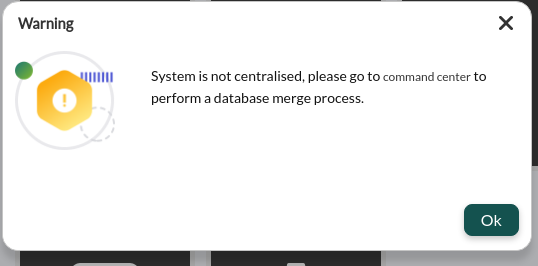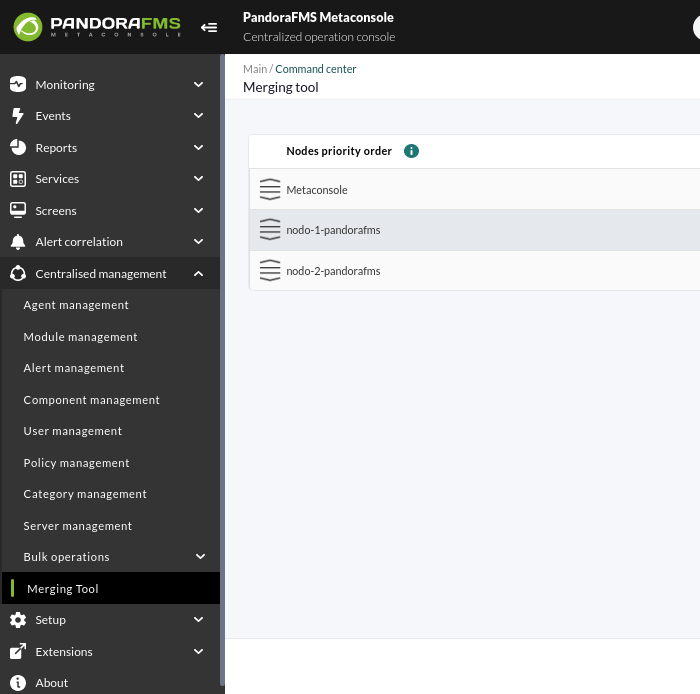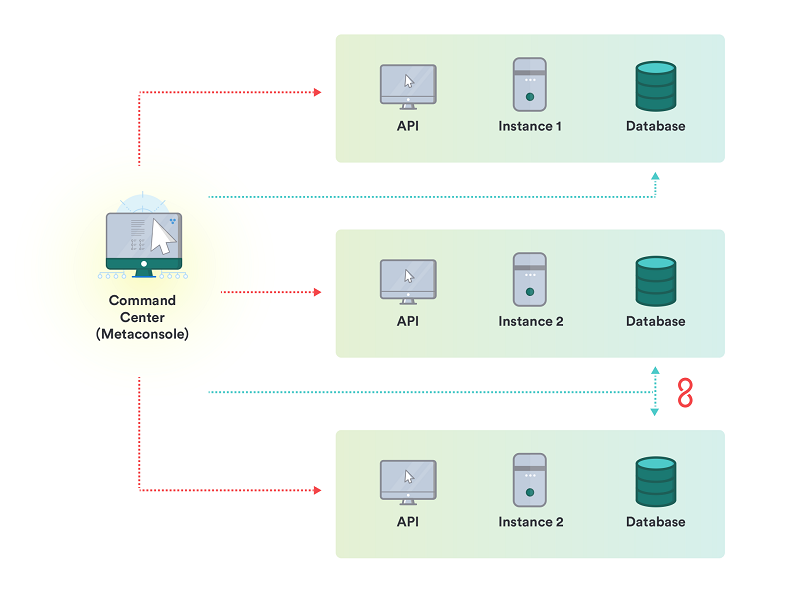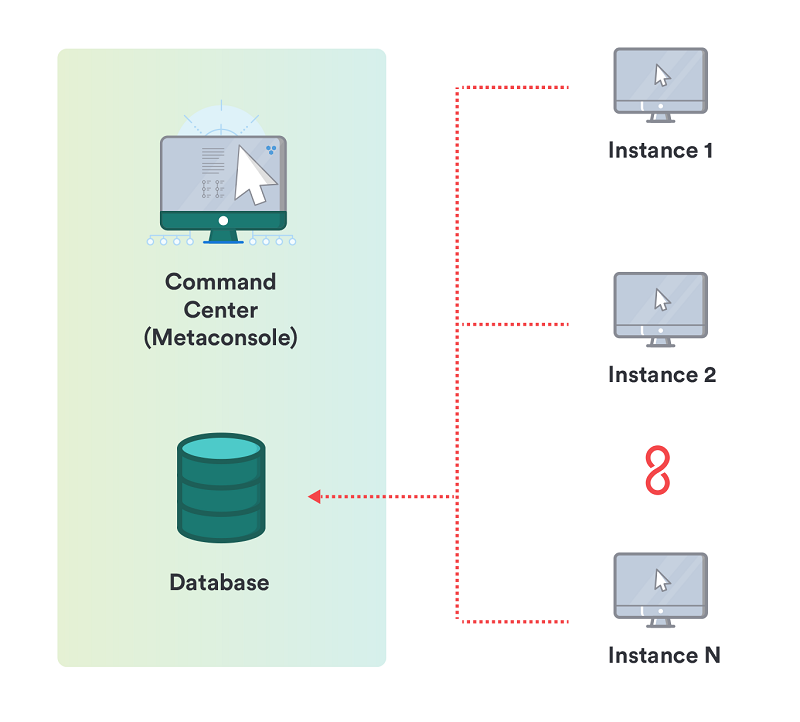Architecture and Synchronization
Architecture
The Command Center (Metaconsole) architecture is made up by:
- A central node, the Command Center.
- As many server nodes as needed, the Instances.
Instances are normal Pandora FMS installations. They consist of a web console in the front end and a server in the back end that processes the received data, performs remote checks,etc.
From version 6.0 onwards, the Command Center has been modified and it currently has its own server since for previous versions the Command Center does not have its own server.
Version NG 755 or earlier: you will need to configure the use of the Command Center, where all the relevant information is available.
From Pandora FMS version 756, the synchronization system for environments with centralized mode has been redesigned from scratch, making it faster and more efficient, since the changes will be replicated to the nodes automatically without the need for manual synchronization, as it was the case up to now.
This change makes the previous system obsolete, so in environments where it was active, it will have to go through the previous automatic merging system to use the new centralization system and be able to guarantee data integrity.
When updating, all the already centralized Command Center environments will be forced to go through the new Merging tool section located at Centralised management to be able to be centralized again correctly.
Where does it store data?
Some data can be found on the Instances, others on the Command Center, and others in both places. They need to be synchronized to work properly.
On Instances:
- Agents.
- Modules.
- Alerts.
- Policies.
On the Command Center:
- The Command Center configuration.
- Components.
- Reports and report templates.
On both:
- Users and profiles.
- Groups.
- Templates, actions and alert commands.
- Tags.
- Categories.
How is information retrieved and modified?
The Command Center obtains and modifies Instance information in two different ways:
- Active: Access to instance Database or API remotely from the Command Center (this is the case for agents, modules, alerts, etc.).
- Passive: It replicates data from instances to the Command Center Database (this is the case for events).
How is information retrieved and modified?
The Command Center obtains and modifies Instance information in two different ways:
- Active: Access to the instance Database or API remotely from the Command Center (this is the case for agents, modules, alerts, etc.).
- Passive: Replicates data from instances to the Command Center Database (this is the case for events).


 Home
Home















